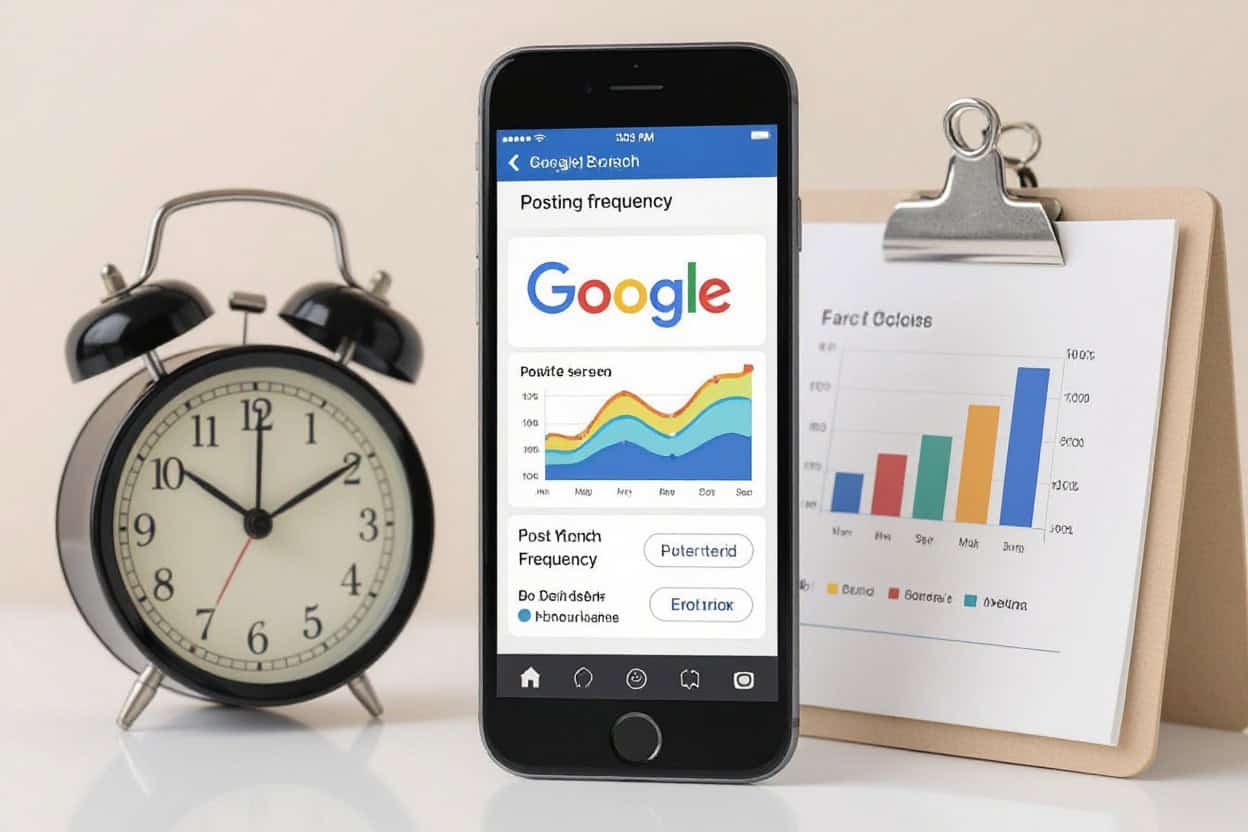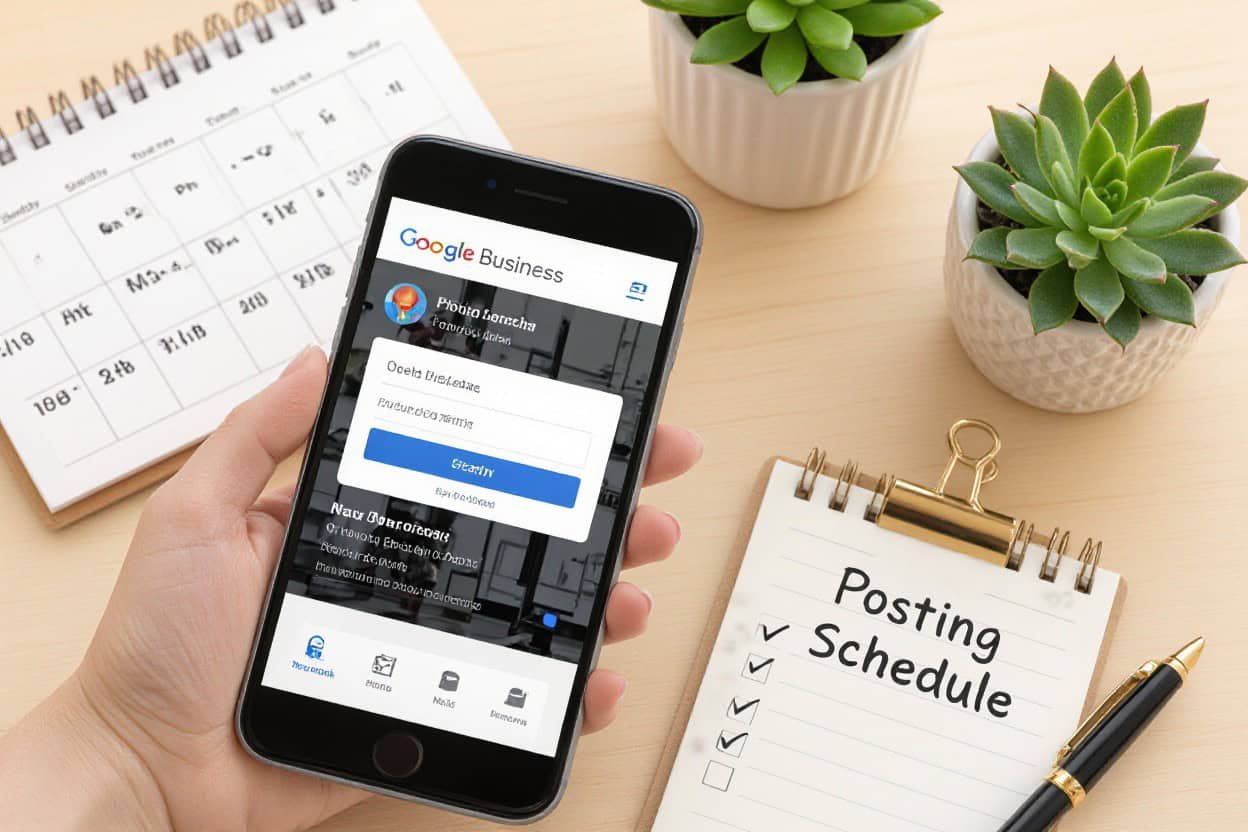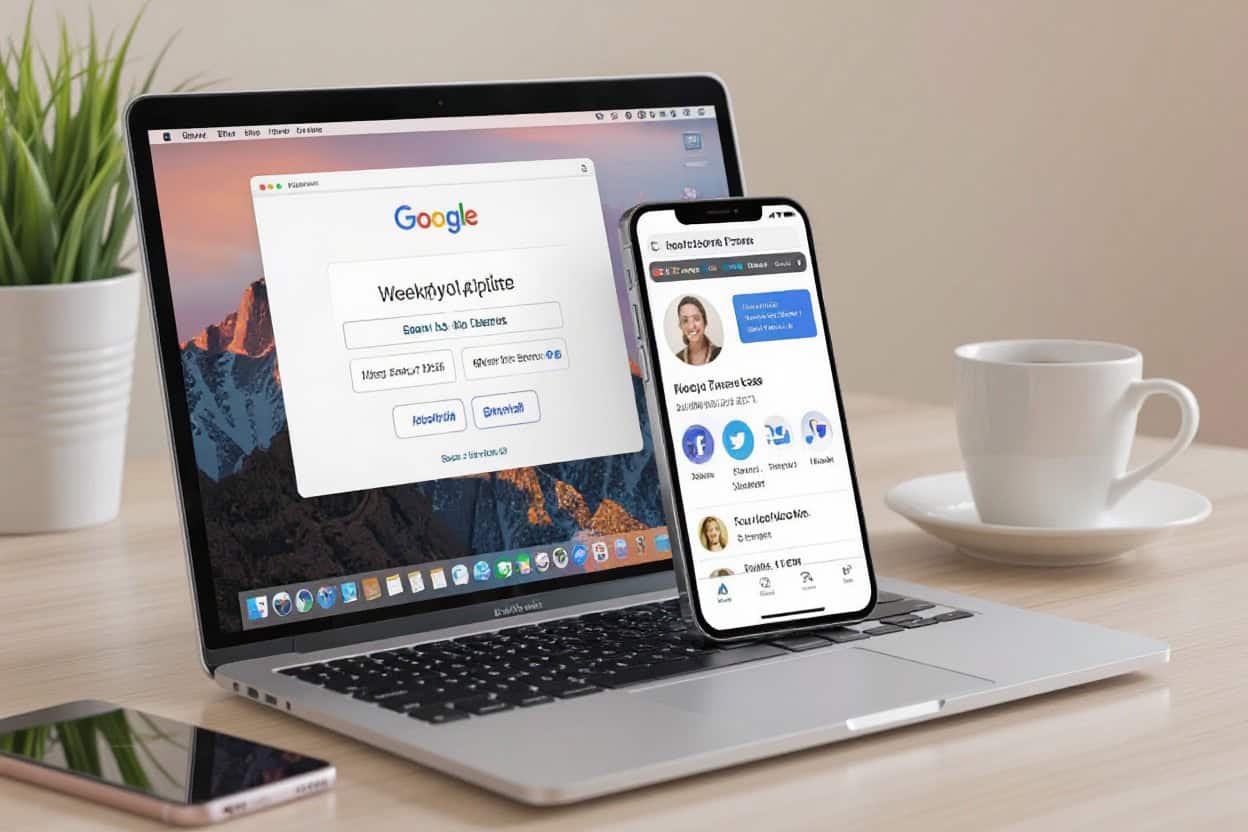posting at least once a week helps you stay visible and signals to Google that your business is active; you should aim for 1–3 posts weekly for most businesses, increase frequency during promotions or events, and maintain quality over quantity so your updates provide value to customers and improve local search performance.
Key Takeaways:
- Post at least once a week; Google Posts typically display for seven days, so weekly updates keep your profile current.
- Aim for 1–3 quality posts per week—consistency and relevance matter more than volume.
- Use posts for time-sensitive items (offers, events, product news) and adjust frequency based on engagement insights.

The Algorithm’s Pulse: How Frequency Impacts Visibility
Google rewards fresh, engaging content: posts remain visible for seven days, so posting 1–3 times weekly (about 52–156 posts per year) keeps your profile within the recency window without overwhelming followers. Fresh posts send a signal to Local Pack and Maps that your business is active; consistent cadence combined with meaningful engagement (clicks, calls, direction requests) helps sustain higher visibility than sporadic or overly frequent low-value updates.
The Role of Recency in Ranking
Recency is a direct ranking signal for local searches—Google surfaces newer, relevant content in time-sensitive queries. Timely posts like same-day specials, updated hours for holidays, or limited-time offers can improve your visibility in immediate searches and map results. Since posts expire after seven days, aligning content to events or promotions ensures you capture users searching right now rather than relying on stale information.
Balancing Quantity with Quality
Posting often without value dilutes engagement; focus on 1–3 high-quality posts weekly that include clear CTAs, crisp photos, and concise copy. Aim for content that drives action—specials, events, and product highlights—so each post has measurable purpose instead of filling a quota.
Mix post types to test what moves metrics: try one promotional post and one informational update per week, then use GBP Insights (views, searches, actions) to compare performance. Track click-through rate, website clicks, and direction requests over 4–8 weeks, iterate headlines/images based on winners, and maintain a simple content calendar to keep frequency consistent without sacrificing quality.
Crafting a Posting Schedule That Works for You
You should align posting cadence with available resources and customer behavior: many small businesses find 2–3 posts per week balances visibility and consistency, retail brands often post 3–5 times around promotions, and service providers get steady traffic with one substantive post weekly; allocate a 30–60 minute planning block and batch-create images to maintain quality without daily effort.
Identifying Key Content Types for Your Audience
Prioritize content that drives actions: promotional offers, event announcements, product highlights, how-to/informational posts, and customer testimonials each serve different stages of the funnel; allocate roughly 30–40% product highlights, 20–30% offers, 10–20% informational, 10–20% events, and 10% reviews. Any mix that leans toward product highlights and time-limited offers during peak business hours typically increases clicks and calls.
- Promotions — time-limited discounts, 20–30% of posts
- Events — in-store or online, 10–20% of posts
- Product/Service highlights — new arrivals or seasonal items, 30–40%
- How-to/Informational — quick tips or FAQs, 10–20%
- Reviews/Testimonials — social proof, ~10%
| Content Type | Recommended Frequency / Timing |
|---|---|
| Promotions | 2–4 per month; post 48–72 hrs before offer starts and again day-of |
| Events | 1–2 per event; announce 2 weeks prior, reminders 3 days and day-of |
| Product Highlights | 1–3 per week; mornings (9–11am) on weekdays for service/retail |
| How-to / Informational | 1 per week; midday posts (12–2pm) for higher engagement |
| Reviews / Testimonials | 1–2 per month; post after recent positive interactions to boost credibility |
Utilizing Analytics for Timing Decisions
Pull hourly and daily trends from Google Business Profile Insights and your Google Analytics to spot when profile views, clicks, and direction requests peak; many profiles show 50–70% of post-driven activity within the first 48–72 hours, so schedule critical posts to publish just before those high-traffic windows you identify—weekday mornings often outperform late evenings for service businesses.
Run simple A/B tests over 2–4 week blocks: post identical content at two different times (e.g., 9am vs 5pm), track views, clicks, calls, and direction requests, and use UTM tags to verify website conversions; in practice, service businesses may see 25–40% more calls in morning slots, while restaurants often spike at 11:30–13:30, so iterate your schedule based on those measured lifts.
Seasonal Strategies: Adapting Your Updates Through the Year
Shift your baseline of one weekly post to a dynamic calendar: increase to 2–4 posts per week during seasonal peaks and consider daily posts for short, high-traffic windows like holiday weeks. Use Google Posts’ seven-day visibility to schedule countdowns, day-of promos, and quick updates; a downtown bakery that posted daily throughout December reported a noticeable rise in walk-ins and online orders, showing how concentrated cadence can lift short-term traffic.
Capturing Trends and Events
Monitor local calendars and national trends—tax season, Mother’s Day, summer festivals—and craft posts that tie your offer to the moment, such as limited-time menu items or event pick-up windows. Push event-specific photos, clear CTAs, and updated hours; during a city marathon week, restaurants that posted updated menus and curbside pickup options saw higher click-to-call rates. Aim for daily or every-other-day posts in the week leading up to major events to stay top-of-mind.
Planning for Busy Seasons and Sales
Build a seasonal content calendar at least 4–6 weeks ahead, mapping promotions, asset production, and posting cadence—start promotional posts two weeks before a big sale and ramp to daily during peak days like Black Friday. Use Google Business Profile’s Offer and Event post types, include booking or purchase links, and tag end dates to create urgency; track GBP Insights for clicks and calls to refine timing for future seasons.
For execution, prepare assets (photos, headlines, discount codes) 3–4 weeks before peak, schedule posts with clear CTAs, and set UTM parameters to measure conversions from each post. Typical rhythm: 1–2 posts/week baseline, 4–7 posts/week during peak, and targeted day-of updates; a local florist that scheduled offers and booking links for Mother’s Day reported a roughly 30% increase in reservations compared with the prior month.

The Fine Line: Avoiding Burnout and Overposting
Balance your posting so it fits team capacity and audience attention: many small businesses sustain 1–3 Google Business Profile posts per week without overload, whereas daily posting can strain resources and lower quality. Watch staff hours—if your team spends more than five hours weekly on GBP content, streamline with templates, batch creation, or outsourcing. Track week-over-week engagement; a consistent 20% decline in views or clicks signals you should scale back and refocus on higher-value updates.
Recognizing Audience Fatigue
Sharp drops in views, clicks, or calls are the clearest signs your audience is tuning out; monitor GBP Insights for declines of 15–30% over two weeks. Pay attention to comment tone, fewer photo views, and reduced direction requests. For example, a bakery posting daily specials halted daily posts after photo views fell 25% in ten days and regained engagement within three weeks by shifting to three quality posts weekly.
Effective Content Diversification
Rotate formats to keep your profile fresh: mix photos (40%), offers (20%), events (20%), and short videos or posts answering FAQs (20%) as a starting split, then adjust to performance. You should A/B test CTAs and post times, reuse blog snippets as quick updates, and swap in seasonal content—diversification helps you avoid repetition and maintains steady impressions without increasing weekly post volume.
Use templates and batching: schedule two photo posts and one short video per week when capacity allows, but limit promotional offers to 1–3 per month to prevent ad fatigue. Short videos under 30 seconds typically get higher click rates; a local dental clinic that shifted to two visual posts plus one monthly offer saw a 38% rise in customer actions over six weeks. Track which formats drive calls, direction requests, and website clicks, then lean into top performers.
Best Practices from Top Businesses
Top performers stick to 1–3 Google Business Profile posts per week, mixing product updates, limited-time offers, and event announcements. You should pair each post with a high-res image, a clear CTA (book, call, order), and local keywords (neighborhood, city). Schedule around local peak hours—mornings for cafés, late afternoons for service businesses—and use Insights to refine timing and post type every 4–8 weeks.
Case Examples of Successful Profiles
A regional bakery that posted three weekly updates—daily special, weekend event, and customer photo—saw weekend foot traffic double within six weeks. A salon using one promotional post plus one booking reminder per week increased online bookings by a steady margin. National retailers often combine weekly product highlights with seasonal posts, driving consistent search visibility and encouraging repeat visits.
Lessons Learned from Over-Posting
Brands that publish multiple daily posts often face audience fatigue and lower engagement rates; users begin to ignore repetitive promotions and click-throughs decline. You can dilute your message if every post is sales-heavy or redundant, and inconsistent information (hours, prices) across frequent updates confuses customers and hurts trust.
Mitigate over-posting by consolidating content into focused weekly updates and tracking click and call metrics in Insights. Test a 4–8 week cadence change, measure impressions, actions, and direction requests, and shift to the cadence that maintains stable or rising engagement while keeping post quality high.
To wrap up
Conclusively, you should post to your Google Business Profile at least once a week and up to three times weekly for peak engagement; for events, offers, or important news post immediately. Consistent, concise updates signal relevance to Google and customers, so establish a manageable schedule you can sustain and monitor for results.
FAQ
Q: How often should I post general updates on my Google Business Profile?
A: Aim for consistency rather than volume. For most businesses 1–3 posts per week is effective: it keeps your profile active without overwhelming followers. Use short, timely posts for weekly specials or news, add a photo or CTA to increase engagement, and prioritize high-quality, relevant updates over frequent low-value posts. Note that standard posts age after seven days, so plan content cadence around that lifecycle.
Q: Should posting frequency change based on my industry or goals?
A: Yes. Retail and restaurants benefit from more frequent updates (daily to several times per week) because menus, offers and inventory change often. Service providers and B2B businesses typically do well with 1–3 posts weekly focused on case studies, tips, or seasonal offers. For short campaigns or events, increase frequency during the campaign window. Match cadence to business goals: awareness campaigns justify higher frequency; conversion-focused efforts work best with targeted, timely posts.
Q: Can I post too often, and how do I find the right cadence?
A: Posting too often with repetitive or low-value content can reduce engagement and frustrate customers. Track Google Business Profile Insights (views, clicks, calls, website visits) and monitor engagement per post. Run short tests—try weekly vs. biweekly posting for a month—and compare metrics. If engagement declines, reduce frequency or improve content variety (photos, offers, events). Let engagement trends guide your steady-state cadence.

